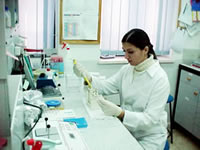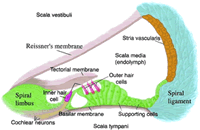Middle East Regional Genome Endeavor (MERGE) Computational Genomics is a new branch of science that bridges biology and genetics with information and computer sciences. An important momentum for this development is provided by the world Human Genome Project. . The Weizmann Institute and the Hebrew University of Jerusalem now harbor a national laboratory for Genome […]
“Pharmacogenic gene delivery and gene therapy of Restenosis “ Antisense oligodeoxnucleotides (ODN) are small stretches that have shown the ability to inhibit gene expression. Therefore, they are promising candidates for the treatment of various diseases. However, because of poor stability in biological fluids and weak intracellular penetration their use in living systems is prohibited. Aiming […]
Clinical and Genetic Features Epidermolysis bullosa (EB) encompasses an heterogeneous group of hereditary disorders characterized by blistering of the skin upon exposure to mechanical stress. Although the most obvious signs of the disease are vesicles and bullae within the skin and mucous membranes, internal organs may also be involved (Fine et al, 2000). EB is […]
B-Thalasimia A study of the spectrum of b-Thalasimia mutations in the West Bank revealed the presence of ten different b-globin mutations. The study involved 42 patients with B-thal major and 43 suspected carriers with Cooley’s anemia. The IVS1.6 mutation predominated with a frequency of 52.8% and was almost invariably associated with chromosome haplotype VI. Seven […]
Summary The overall goal inhuman genetic research is to understand the biological function of normal genes, and how once perturbed, they lead to a diseased state. Errors in our genes, or mutations, often cause one of the most common sensory defects, the loss of hearing. Hereditary sensorineural hearing loss affects approximately 3% of the population […]



